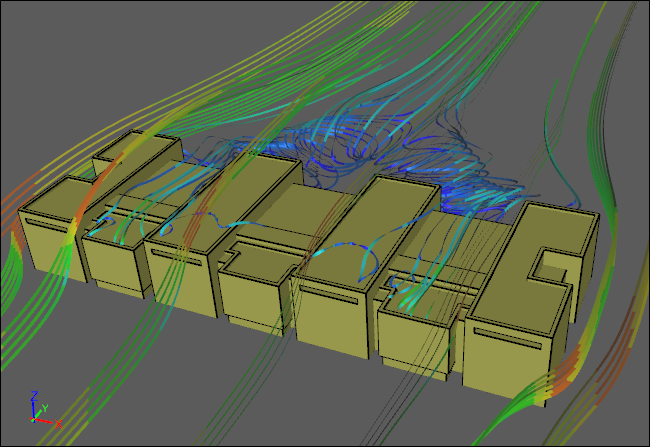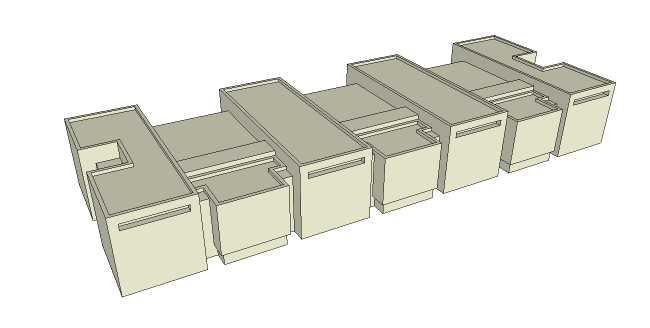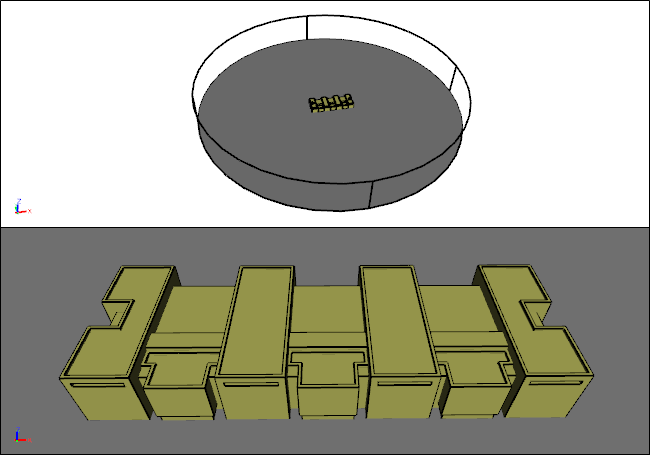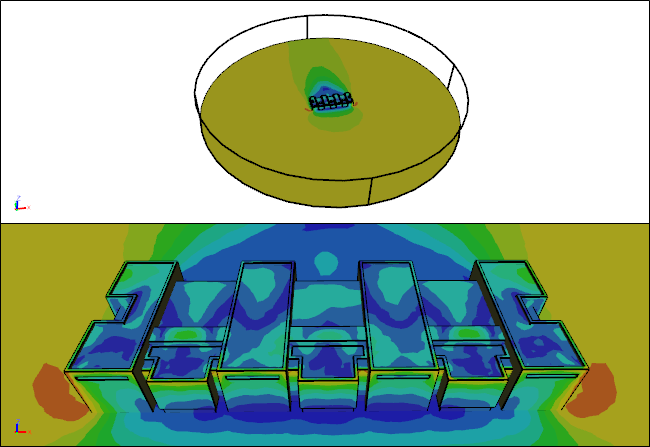
CFD Benefits From 3D Printing
It turns out that preparing geometry models for 3D printing has a lot of similarities with preparing geometry for Computational Fluid Dynamics (CFD). Both require watertight non-manifold geometry, otherwise your model will plunge your 3D printer or your CFD software into chaos.
 Airflow CFD Simulation Around the Smithsonian Air and Space MuseumStreamlines
Airflow CFD Simulation Around the Smithsonian Air and Space MuseumStreamlines
Given a 3D printable model, the CFD simulation process is relatively straightforward.
 Watertight and Non-ManifoldSketchUp model prepared for 3D printing
Watertight and Non-ManifoldSketchUp model prepared for 3D printing
Simply subtract the non-manifold model from a surrounding volume of air and your geometry is done.
 CFD Flow Volume
CFD Flow Volume
Then it is a small step to set up the substance, assign boundary conditions, and run the simulation.
 CFD Simulation ResultsVelocity contours
CFD Simulation ResultsVelocity contours
SketchUp is a popular application to prepare models for 3D printing and that same process is directly applicable for CFD model preparation. Then the big question is how do you use SketchUp to create a non-manifold model? Lucky for us there is a how-to blog post and video to help.
SketchUp 3D Printing Preparation
Notes
- The original SketchUp model of the Smithsonian Air and Space Museum is available on 3D Warehouse.
- Caedium was used to create the watertight flow volume, set up the substance, assign the boundary conditions, and finally run the simulation.
Recent blog posts
- CFD Simulates Distant Past
- Background on the Caedium v6.0 Release
- Long-Necked Dinosaurs Succumb To CFD
- CFD Provides Insight Into Mystery Fossils
- Wind Turbine Design According to Insects
- Runners Discover Drafting
- Wind Tunnel and CFD Reveal Best Cycling Tuck
- Active Aerodynamics on the Lamborghini Huracán Performante
- Fluidic Logic
- Stonehenge Vortex Revealed as April Fools' Day Distortion Field
